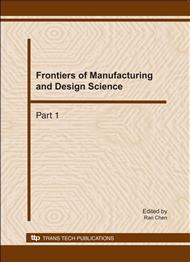p.2762
p.2769
p.2774
p.2778
p.2783
p.2788
p.2793
p.2798
p.2805
ITO Transparent Conductive Films Prepared under Non-Vacuum Conditions
Abstract:
Indium Tin Oxide (ITO) conductive films are widely used to make Thin Film Transistor (TFT), Liquid Crystal Display (LCD), and Plasma Display Panel (PDP) as its high transmittance of visible light and conductivity. But now, most of the methods that used to prepare ITO conductive film must be conducted under vacuum condition and there are many problems in the economic benefits and production efficiency of these methods which limit their application. In this paper two ITO film prepared methods under non-vacuum condition are proposed: one is a matrix-injecting method, the other is a high voltage electro-spinning method. Some simple experiments and designs are executed to test the feasibility of the above two methods. The results shown that the above two methods are fit to prepare the ITO film, and the surface quality of initial ITO film made by the high voltage electro-spinning method is smooth and uniformity.
Info:
Periodical:
Pages:
2783-2787
Citation:
Online since:
December 2010
Authors:
Price:
Сopyright:
© 2011 Trans Tech Publications Ltd. All Rights Reserved
Share:
Citation:


